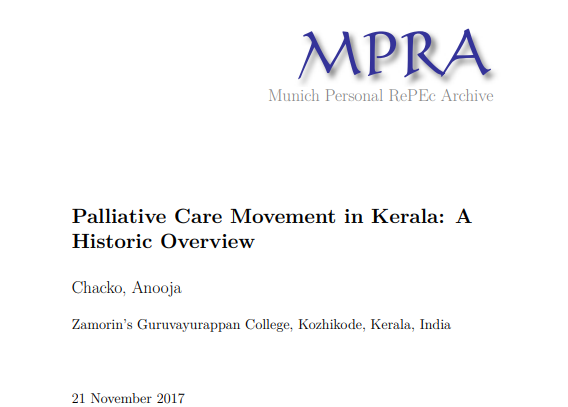Is the Kerala Model of Community‑Based Palliative Care Operations Sustainable? Evidence from the Field
The Kerala model of community-based palliative care is often celebrated as a sustainable and inclusive approach to providing holistic healthcare to individuals with life-limiting illnesses. This study explores the sustainability of the Kerala model by examining ten selected palliative care units across the Malappuram and Palakkad districts, focusing on three key dimensions of sustainability: patient care, economic self-sufficiency, and voluntary support. The research highlights how the model ensures uninterrupted, cost-free, and comprehensive care, encompassing physical, psychological, spiritual, and economic support for patients and their families.
In Malappuram, where palliative care services are particularly robust, there are approximately 112 palliative care units operated by local self-governments, complemented by an additional 90 community-led or NGO-run units. This extensive network demonstrates Malappuram’s critical role in implementing and sustaining community-based care. The district's palliative care units deliver services through home visits, outpatient care, and resource mobilization for medical and non-medical needs. Free medication, medical equipment, psychosocial counseling, and family education are integral components of care.
Economic sustainability in Malappuram is achieved through innovative funding mechanisms, including micro-donations, monthly collections, and social entrepreneurship initiatives. These funds support infrastructure development, such as the construction of buildings and procurement of vehicles, ensuring the operational efficiency of palliative care units. Volunteers form the backbone of this model, playing a crucial role in patient care, fundraising, and resource mobilization, with a strong community consensus underpinning their efforts.
The study concludes that the Kerala model, exemplified by Malappuram’s extensive network, offers a replicable and scalable framework for community-based palliative care. By integrating patient-centered care, economic resilience, and voluntary participation, the model demonstrates the potential for sustainability in resource-poor settings. Future research could delve deeper into the sociocultural and economic aspects of this model to facilitate its replication in other regions.




Comments
Post a Comment